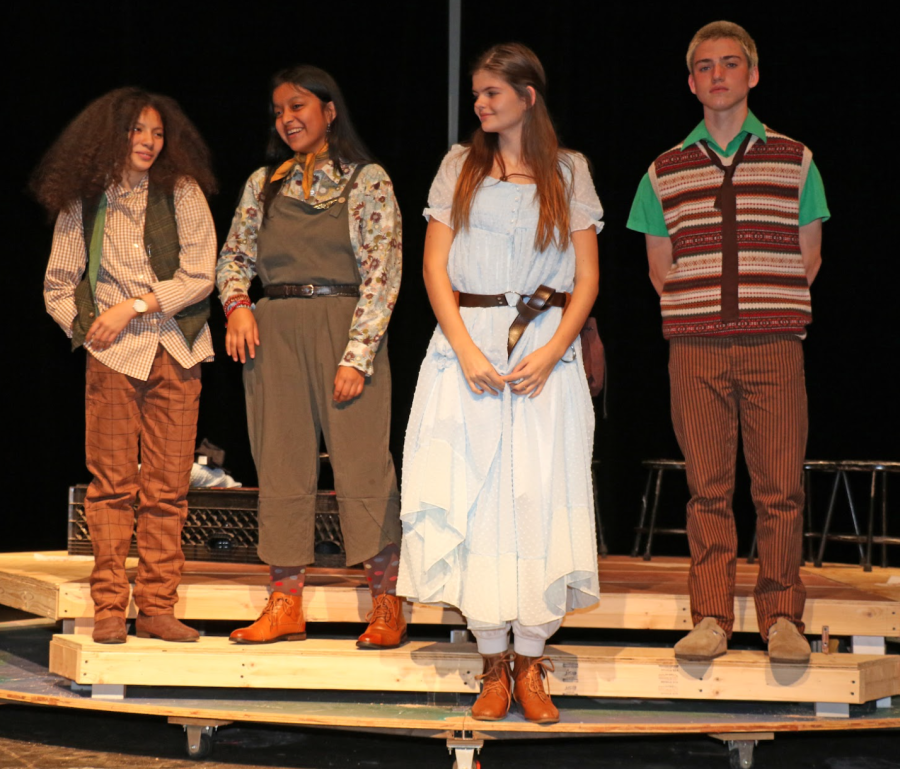Lost Girl: Backstage
January 4, 2023
This year’s Upper School play Lost Girl, a sequel to the renowned Disney movie Peter Pan, premiered in the Richard Perry Theatre on November 18th and 19th. Told through the perspective of Wendy Darling, the play explores themes of growing up, remembering, and first loves. As Wendy returns from Neverland she grapples with what (and who) she has left behind spending time with a doctor, a therapist, and a detective. In addition, she meets three girls who are also experiencing the loss of Peter Pan: Callie, Krista, and Cora. These girls are known as “the others.” Freshman Tessa Cooper and I, Carolina Lisk, had the opportunity of playing two of “the others” in this piece.
Director Cynthia Babak commended the actors for their work since September and leading up to the production. “Without our actors’ work, the set and the lights, and the costumes don’t mean anything,” said Babak.
Senior Keelin Walshe, who plays the starring role of Wendy, reflected on her experience taking on this kind of role. “The lines are definitely the hardest part about playing Wendy,” said Walshe. Walshe not only had the challenge of memorizing page-long monologues, but her character never leaves the stage, meaning Walshe must act from start to finish in the ninety-minute long production. Keelin also added that “the best part of the play is getting to see everyone act throughout the entire play and getting to interact with every character.”
Senior Fiona Stephenson had a special experience during the production, as both an actor and the assistant director to Babak. Stephenson has had many acting experiences outside of the show, which aided her in her role as an assistant director. My experience acting helped me direct because I could relate to the actors,” Stephenson said. “It also helped me envision the blocking needed.”
As the writers of this piece, we’re writing as actors in the show ourselves: specifically Cora and Krista, two of “the other” girls. “The others” represent Wendy’s thoughts advocating for her when she refuses to speak for herself. Playing a character that shadows Wendy helped me —Carolina — grow and learn from other actors in the production. Shadowing Walshe in her role as Wendy helped me connect the emotions she was feeling and pushed me to convey all the emotions we shared. As a freshman, new to the Upper School’s theater department, I am thankful to have learned from every single actor on and off stage.
The play would not have been the same without the brilliant costume and set design. Costume Director Kim Griffin said that the costumes were intended to keep the fairytale modernized but also Victorian at the same time. Mr Hogan, the set designer, described his process for designing and creating the Lost Girl set. He said his steps are to use the mood of the play and the director’s notes to create sketches. He then breaks it down into smaller elements thinking about the factors such as how it will get made, the colors it will be painted, and where the props will be placed.
The elements that take part in The Lost Girl are all significant in their own ways. Without one aspect, the play would not be able to reach the level of complexity of the end result. All the people who helped create the play used their talents to help the show come to life.


























